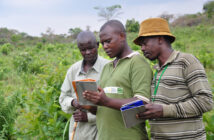Gombe’s transformative research is as dynamic and insightful as ever. In 2019, six decades after it first began, daily routine observations of chimpanzees, known as the B-Record, continued alongside studies of chimpanzee mothers and infants, adolescent females, and vocalizations as well as research including health, other species and more.
Through a Window: Chimpanzees and Ourselves
In 2019, the JGI team conducted 716 daily chimpanzee focal follows; 74% of these follows were more than 8 hours (81% at Mitumba, cf. 67 % at Kasekela). In the Kasekela community, there were two births, to Fanni a daughter (Fatima) and to Gremlin a son (Goodalli), as well as two deaths (infant Baseke and a newborn). Observations of the chimpanzees followed their diet and ranging pattern, territoriality and intergroup relations, hunting, male politics, female-to-female relationships, immigration of females between communities, and instances of infanticide. Understanding of these factors has implications for understanding the species at large but is also essential for the conservation of the species.
In 2019, four major research pieces in Nature and more than 38 research pieces across major journals and other platforms either directly published Gombe research or referenced it. One of the extensive research pieces in Nature, titled “Cultural variation between neighboring communities of chimpanzees at Gombe, Tanzania,” and written by University of Oxford’s Alejandra Pascual-Garrido, focused on understanding the cultural variation between neighboring groups from the same population, rather than those that are environmentally separated, in order to better detail other reasons for divergent culture, such as genetics or ecological influences. In 2019, more than 20 researchers focused their work in Gombe, covering topics like chimpanzee dialects, maternal behavior, and reproductive energetics.
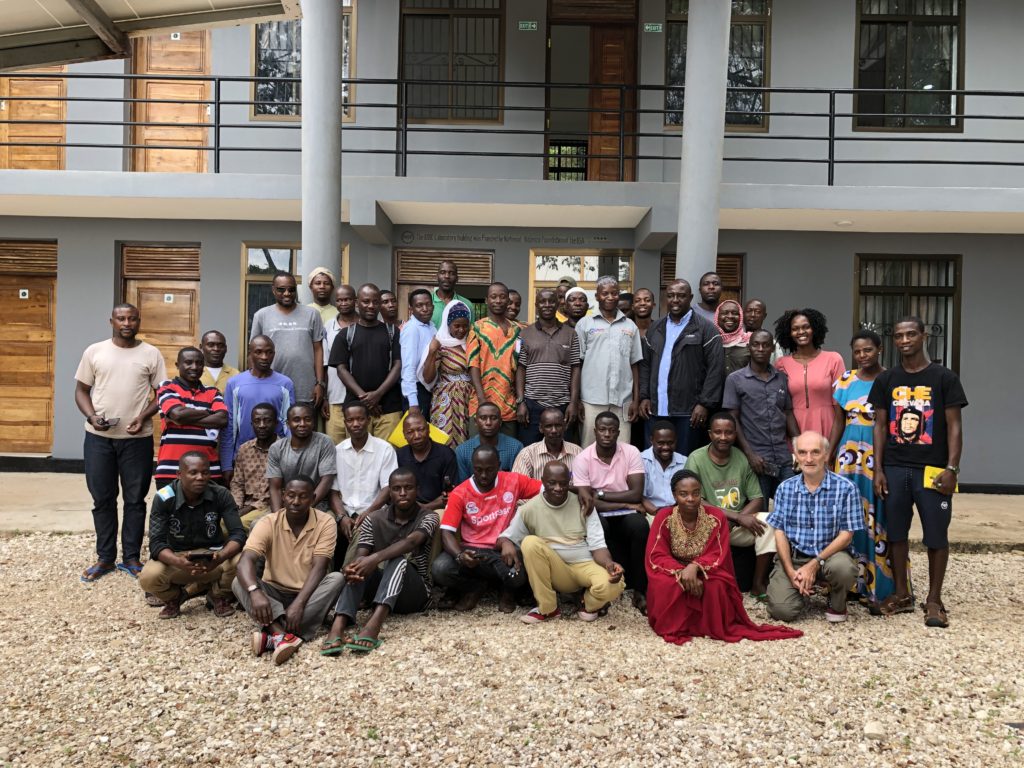
One of the most fascinating chimpanzee community interactions centered around 23-year-old male Fudge (pronounced “Fuji”), and his uncle Ferdinand of the ‘F Family’, whom Fudge had deposed from the alpha position in 2016. Ferdinand was in exile from the main group after that. In December of 2019, however, Ferdinand took advantage of the fact that Fudge was away from the main group for several weeks, likely with a fertile female, and thus reinserted himself in the core group. He redeveloped key relationships, most notably with his brother Faustino and his nephew Fundi. When Fudge returned, he was initially not welcomed back as alpha and was instead harassed and chased by this new coalition of males. Despite the setback and temporary ex-communication, he returned and once again achieved alpha status.
Eco-Health
JGI’s unique Eco-health initiative was developed in response to disease as the main cause of death for chimpanzees in Gombe. As humans and chimpanzees are so closely related, it’s essential for us to understand zoonotic disease, which is transmitted between humans and wildlife. Through three strategies, Gombe’s Eco-Health provides remarkable information about great ape and human health.
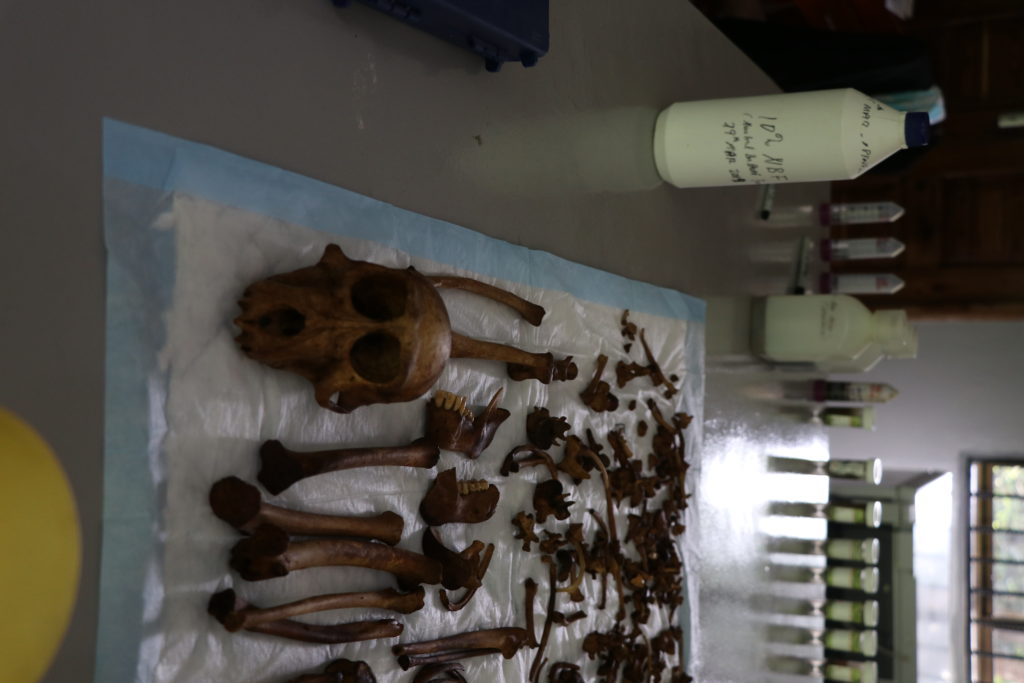
The first strategy involves field assistants completing health sheets after daily chimpanzee observations. This provides an early warning system to draw attention to any chimpanzee before they become gravely ill. In 2019, 670 of these daily health sheets were filled in, along with weekly summary sheets, which the JGI veterinarian, Dismas Mwacha, screened for any potentially serious reports. Daily health sheets are entered into the long-term health database started in 2004, so we can plan for major analyses and compare health and social factors accordingly.
The second strategy is non-invasive sampling, looking for pathogens in fecal samples. In 2019, 268 fecal samples were obtained. This method of fecal sampling compares individual parasite loads with their observed health, allowing comparisons between the three Gombe communities. Our colleagues in this are members of the Gombe Eco-Health team — Elizabeth Lonsdorf (Franklin & Marshall University), Dominic Travis (University of Minnesota), and Tom Gillespie (CDC Atlanta and Emory University). Another essential part of this sampling is through Beatrice Hahn (University of Pennsylvania) and her team, for whom samples are preserved in RNA for study of the virus SIVcpz, closely related to HIV.
The third strategy is a post-mortem examination of any chimpanzees or other primates that die, conducted by the veterinarians of GSRC and the Gombe National Park team. This is followed by a thorough analysis of tissue disorders and pathogens by Karen Terio (University of Illinois).
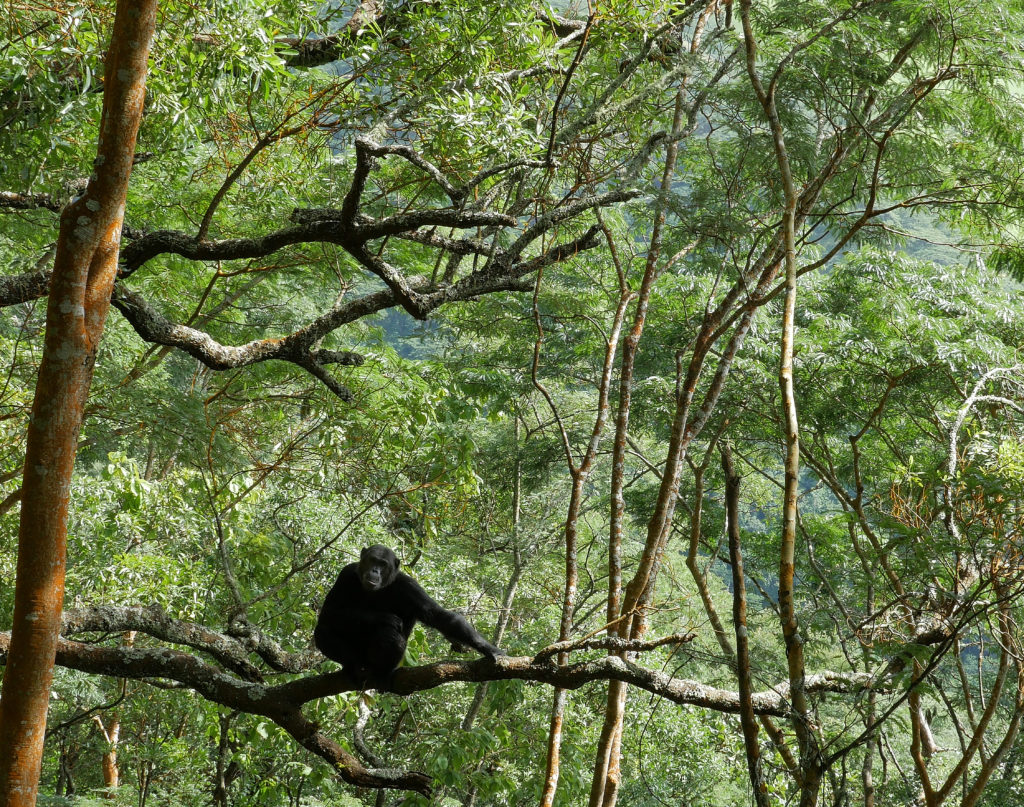
An example of this approach’s importance was underscored in 2019, when it was discovered that Gombe National Park’s baboons and Vervet monkeys (Chlorocebus pygerythrus) have been harboring a spirochaete bacterium (Treponema pallidum pertenue), similar to those that cause yaws and syphilis in humans, which could theoretically be transferred to chimpanzees. During 2018 and 2019, under the direction of the veterinarian at Tanzania National Parks Authority (TANAPA), several treatments were provided to all baboon group members, except for the youngest females, in order to eliminate the disease. The treatment was non-intrusive, using bananas laced with the antibiotic Ampicillin, and proved 95 % successful.
The COVID-19 pandemic, one of many coronaviruses of which great apes are also susceptible and one that originated through transmittal from wildlife, puts a greater emphasis on the value for this long-term work. Additionally, chimpanzee health research brings new understanding for the health of humans; such as the case for studying SIV.
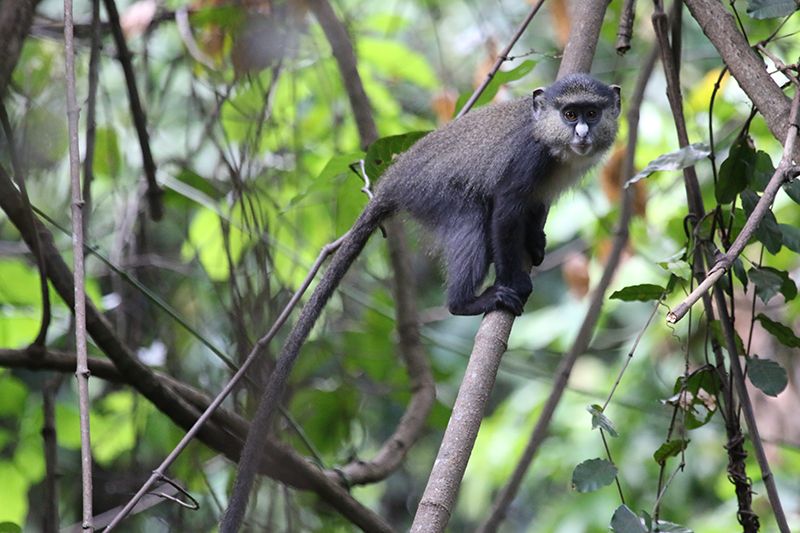
Guenon Research
In Gombe, there are two forest guenon species, on which an ecological and behavioral study has been conducted for many years by Dr. Kate Detwiler (Florida Atlantic University). The two are from separate species-groups — Mitis-group (blue monkeys) and Nictitans-group (red-tailed monkeys). In normal circumstances, they live together without hybridizing, as seen in Kenya’s Kakamega Forest and Uganda’s Kibale Forest. In Gombe, however, there are hybrids throughout the park. The relation between the prevalence of hybrid genotype and the extent of hybrid phenotype is one of the main questions of this project. The research also provides insight into the manner of spreading one species’ genes into populations of another species. For example, recent mitochondrial DNA analyses have shown that all the blue monkeys have genes from the red-tailed monkeys, of two different haplotypes, suggesting hybridization is not only happening at present but that there has been at least one previous period of genes shared from red-tailed monkeys moving into the gene pool of the blue monkeys.
More to Explore
- Read more stories from the 2019 Annual Report at janegoodall.org/impact19.
- Learn more about and become a Gombe Science Hero here.
- Explore more about Gombe 60 in our storymap here.

The Jane Goodall Institute is a global community conservation organization that advances the vision and work of Dr. Jane Goodall. By protecting chimpanzees and inspiring people to conserve the natural world we all share, we improve the lives of people, animals and the environment. Everything is connected—everyone can make a difference.







